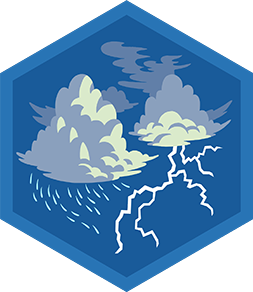Make lightning
Create small, safe "lightning" sparks using static electricity with a balloon, wool, and aluminum foil to observe how hair and paper pieces react.



Step-by-step guide to make small static electricity sparks with a balloon, wool, and aluminum foil
How does lightning form and how do we detect it?
Step 1
Gather the materials listed and sit at a dry flat table.
Step 2
Tear the tissue paper into many tiny squares about the size of a fingernail.
Step 3
Crumple several tiny balls of aluminum foil about the size of a pea and set them on the table.
Step 4
Blow up the balloon and tie a knot at the end.
Step 5
Move away from electronic devices metal objects and water before you start the experiment.
Step 6
Scatter the tiny tissue squares on the dry table so they are easy to see.
Step 7
Rub the balloon briskly on the wool cloth for 20 to 30 seconds to build up static electricity.
Step 8
Hold the charged balloon about 1 to 2 centimeters above the tissue squares and watch them jump or dance.
Step 9
Bring the charged balloon close to your hair without touching it and watch the hairs lift toward the balloon.
Step 10
Hold a tiny foil ball on the table and bring the charged balloon very close to it to see the foil move or hear tiny crackles.
Step 11
Ask an adult to touch the balloon to a metal doorknob or faucet to safely discharge the static when you are finished.
Step 12
Share a photo or description of your lightning experiment and what you observed on DIY.org
Final steps
You're almost there! Complete all the steps, bring your creation to life, post it, and conquer the challenge!


Help!?
What can we use if we don't have tissue paper, aluminum foil, or a wool cloth?
Use coffee filters or thin printer paper torn into fingernail-size squares instead of tissue, crumple a small piece of candy or packaging foil to make pea-sized foil balls, and rub the balloon on a wool sweater, scarf, or even dry hair in place of the wool cloth.
The tissue squares won't move—what troubleshooting steps should I try?
Make sure you rubbed the balloon briskly on the wool cloth for the full 20–30 seconds, keep the table and your hands dry, hold the balloon about 1–2 centimeters above the tissue, and move away from metal objects or water that can drain the static charge.
How can I adapt this activity for different ages?
For toddlers have an adult pre-tear the tissue and handle the balloon and knot while demonstrating hair lifting, for school-age kids let them rub the balloon for 20–30 seconds and try the foil and tissue steps themselves, and for older kids add experiments like changing distance and counting how many pieces jump.
How can we enhance or personalize the lightning experiment?
Try different balloon sizes or cloth materials, vary the size of the foil balls and the 1–2 cm distance to see which combination makes the most dancing tissue or loudest crackles, photograph the steps, and share your observations on DIY.org.
Watch videos on how to make small static electricity sparks with a balloon, wool, and aluminum foil
How Lightning Forms
Facts about static electricity experiments for kids
⚡ Balloons rubbed with wool can pick up tiny paper pieces from several centimeters away thanks to static charge.
🌩️ Lightning is a giant electrostatic discharge — a single bolt can carry over a billion joules of energy.
🎈 Rubbing a balloon can make it stick to walls — the charged balloon is attracted to the surface like a tiny magnet.
🔬 The triboelectric effect explains why different materials gain or lose electrons when rubbed together.
💇♀️ Your hair stands on end after rubbing a balloon because each strand gets the same charge and they repel each other.
How do I make safe 'lightning' sparks with a balloon, wool, and aluminum foil?
What materials do I need to create static 'lightning' at home?
What ages is this static electricity activity suitable for?
What are the benefits and safety tips for making static 'lightning' with kids?


One subscription, many ways to play and learn.
Only $6.99 after trial. No credit card required


